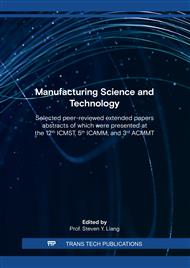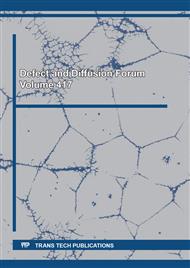p.35
p.45
p.51
p.61
p.67
p.73
p.81
p.87
p.95
In Situ Monitoring of Internal Defects by a Laser Sensor for CMT Based Wire-Arc Additive Manufacturing Parts
Abstract:
Cold metal transfer (CMT) based wire-arc additive manufacturing (WAAM) is increasingly popular for the production of large and complex metallic parts because of its high efficiency and low cost. The presence of internal defects in fabricated parts is a common and critical issue to the process, which degrades parts’ mechanical properties. However, the in-situ monitoring of internal defects can hardly be implemented through traditional inspection techniques due to the surface waviness and the high interlayer temperature of parts. In this study, based on the scan of each deposited layer by a laser sensor and the geometric criteria proposed, an in-situ monitoring method is developed for identifying internal defects, which can be easily applied in an automated WAAM system. Experimental results show that the developed in-situ monitoring identifies 100% accurately the parts without internal defects, and in the cases of parts with internal defects, defective layers can be identified with an accuracy of 93.2%. The effects of process parameters on internal defects have also been investigated.
Info:
Periodical:
Pages:
67-72
Citation:
Online since:
June 2022
Keywords:
Price:
Сopyright:
© 2022 Trans Tech Publications Ltd. All Rights Reserved
Share:
Citation:



